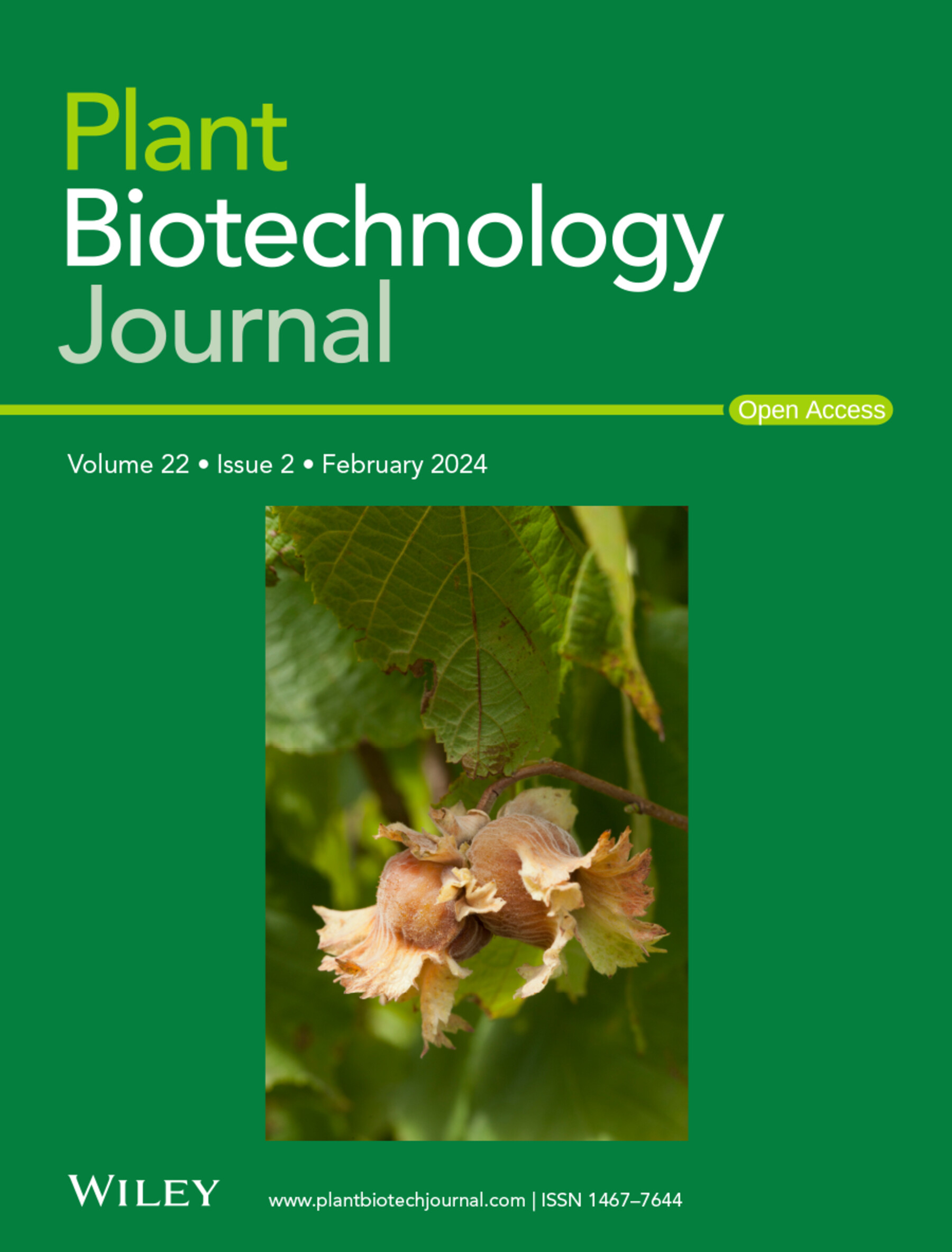The regulatory module MdCPCL‐MdILR3L mediates the synthesis of ascorbic acid and anthocyanin in apple
IF 10.1
1区 生物学
Q1 BIOTECHNOLOGY & APPLIED MICROBIOLOGY
引用次数: 0
Abstract
SummaryApple (调控模块MdCPCL‐MdILR3L介导苹果抗坏血酸和花青素的合成
苹果(Malus domestica Borkh.)是全球最具经济价值的水果作物之一,也是多种营养物质的重要膳食来源。然而,抗坏血酸(AsA)和花青素的水平,人体健康必需的微量营养素,在普通栽培的苹果品种的果肉是极低的。本研究以新疆红肉苹果二代杂交种‘紫红1号’ב嘎’为材料。结果表明,红肉苹果果肉的AsA含量显著高于非红肉品种,且D -甘露糖/L -半乳糖通路关键基因MdGLDH的表达与AsA水平密切相关。以MdGLDH启动子为诱饵,通过酵母单杂交筛选,鉴定出一种R3型MYB转录因子(TF), MdCPC - like。进一步的分析表明,MdCPCL的过表达增加了愈伤组织和果实中AsA和花青素的水平,而MdCPCL的敲低导致它们的水平降低。此外,MdCPCL与bHLH TF MdILR3‐like之间的相互作用被证实,形成MdCPCL‐MdILR3L复合物。该复合物显著增强了下游靶基因MdGLDH和MdANS的转录,促进了AsA和花青素的合成。该研究有助于进一步丰富苹果中AsA和花青素的合成代谢途径,为红肉苹果品种的优质育种提供理论依据。
本文章由计算机程序翻译,如有差异,请以英文原文为准。
求助全文
约1分钟内获得全文
求助全文
来源期刊

Plant Biotechnology Journal
生物-生物工程与应用微生物
CiteScore
20.50
自引率
2.90%
发文量
201
审稿时长
1 months
期刊介绍:
Plant Biotechnology Journal aspires to publish original research and insightful reviews of high impact, authored by prominent researchers in applied plant science. The journal places a special emphasis on molecular plant sciences and their practical applications through plant biotechnology. Our goal is to establish a platform for showcasing significant advances in the field, encompassing curiosity-driven studies with potential applications, strategic research in plant biotechnology, scientific analysis of crucial issues for the beneficial utilization of plant sciences, and assessments of the performance of plant biotechnology products in practical applications.
 求助内容:
求助内容: 应助结果提醒方式:
应助结果提醒方式:


